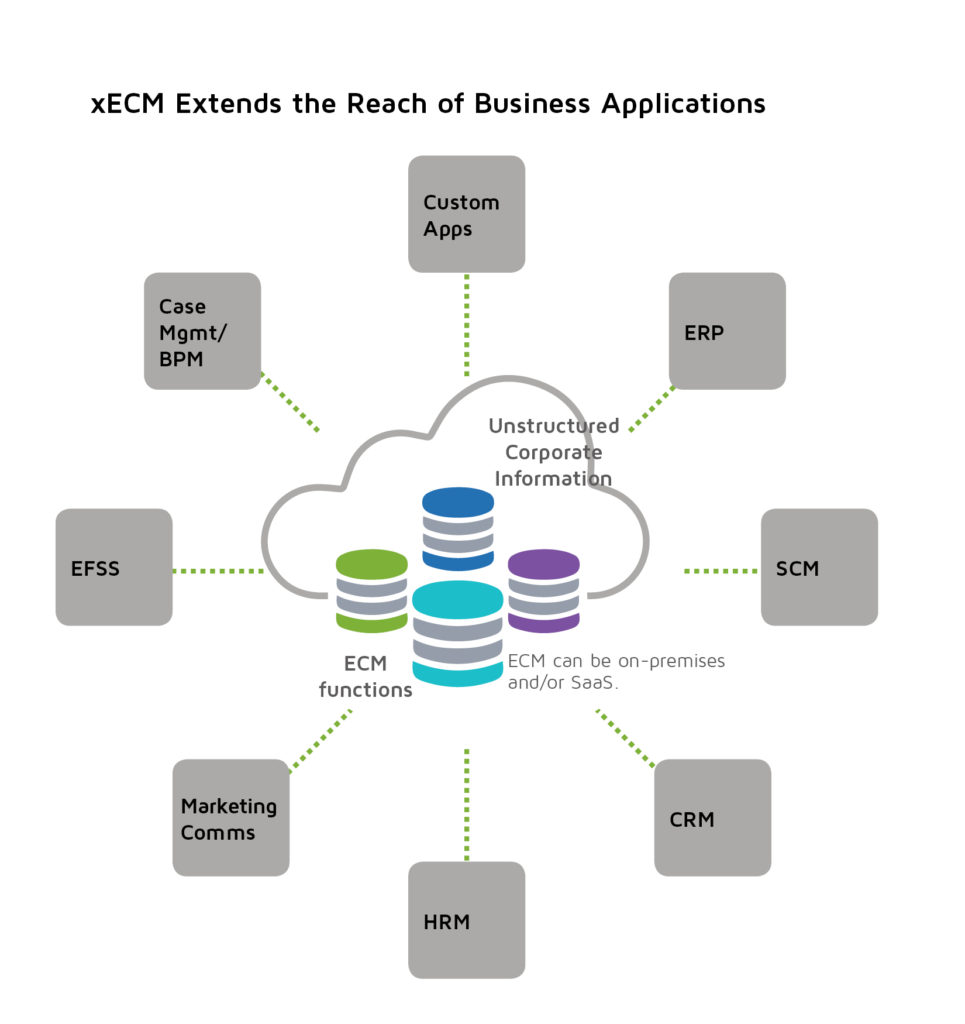Extended ECM (xECM) opens the door to content for CRM users
There’s been good news recently on the extended enterprise content management (xECM) front. Specifically, OpenText and Salesforce.com announced a partnership to integrate OpenText’s Content Server with Salesforce’s CRM through an out-of-the-box connector. This mirrors other recent partnerships from OpenText to integrate Content Server with 1) Microsoft SharePoint Online (Office 365) and 2) SAP SuccessFactors (extending content to HRM). OpenText and SAP have offered xECM to ERP and ECM users for many years.
These xECM integrations are key building blocks for the future of ECM. These types of connectors unlock mission-critical content in a controlled repository, while maintaining context for business users who spend most of their time in ERP, CRM, and HRM. Business users don’t have to learn the ins and outs of Content Server; the relevant content simply appears in their workspace. (Plus, the Microsoft connector unlocks unstructured content residing in SharePoint, making widely dispersed information accessible to Content Server users who typically work in more controlled systems.)
And this is what makes xECM so important. Essentially, it provides access to content for business users from their preferred applications while also providing access to controlled repositories (Content Server) and less formal content stores (e.g., SharePoint). As we noted in a recent Digital Clarity Group report, integrations may be prepackaged and delivered out-of-the-box by the ECM or business applications vendor, or it may be developed in-house by IT or a service provider using the vendor’s universal connectors. (With prepackaged connectors, vendors commit to keeping the integration current as one or both products move to newer releases.)
The graphic below shows how xECM provides a 360-degree view of all relevant information. By integrating apps with content systems, business users aren’t required to search through a separate content repository and navigate the content metadata. Instead, they access content repositories through the familiar business apps they use most of the time—keeping ECM simple and easy to use.
Two unanticipated use cases (in addition to B2C) surfaced when the connector was demonstrated at Dreamforce:
- Conventional wisdom would have predicted lots of buzz for B2C use cases, since Salesforce dominates in those markets. But B2B companies were also interested in integrating managed content with CRM and ERP for a single view of the truth. For example, a worker using a case management system to resolve a service issue for a B2B customer may need to reconcile product information, service records, billing/payment information, and error reports to create a single view of the truth. The connector makes it possible to integrate unstructured content and structured data coming from multiple packaged apps.
- A public sector agency has decided to buy the connector to link CRM and xECM for managing citizen requests. Workers typically manage citizen cases from within CRM, but the agency also needed strong records management, security, and audit trails for unstructured content to provide a consolidated version of the records.
More use cases will surface as businesses and government agencies think about the possibilities that arise from bringing structured and unstructured information together in a single workspace.









